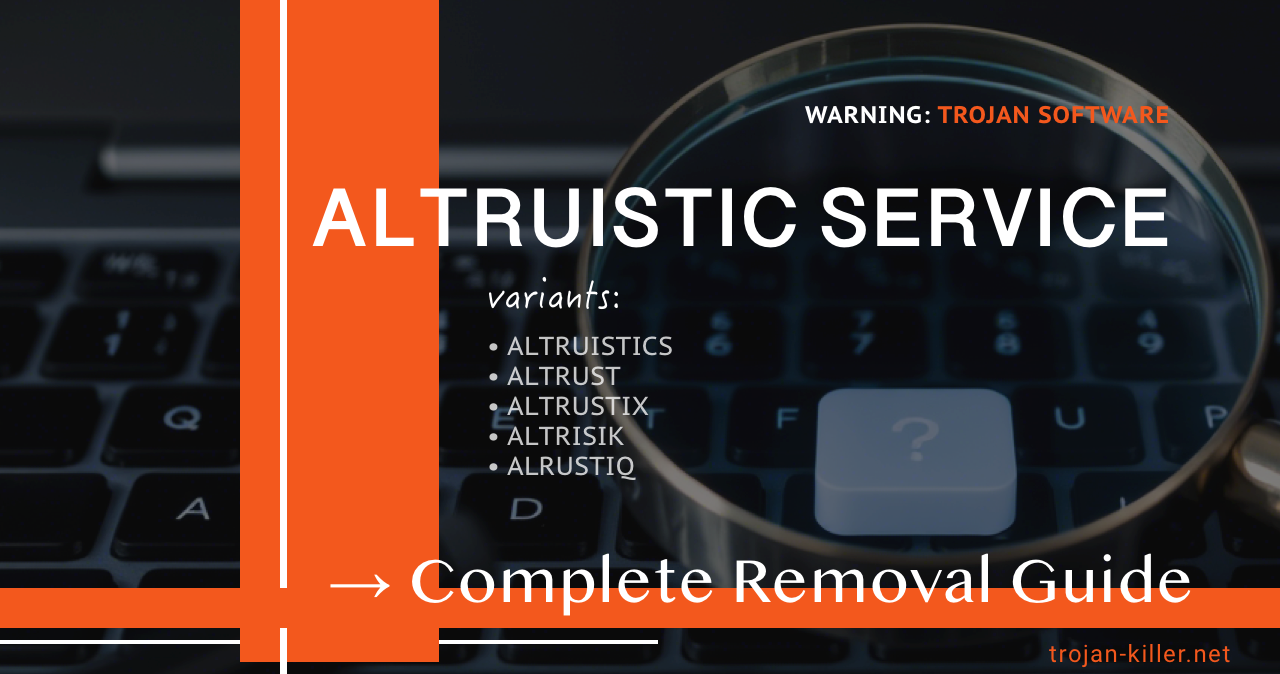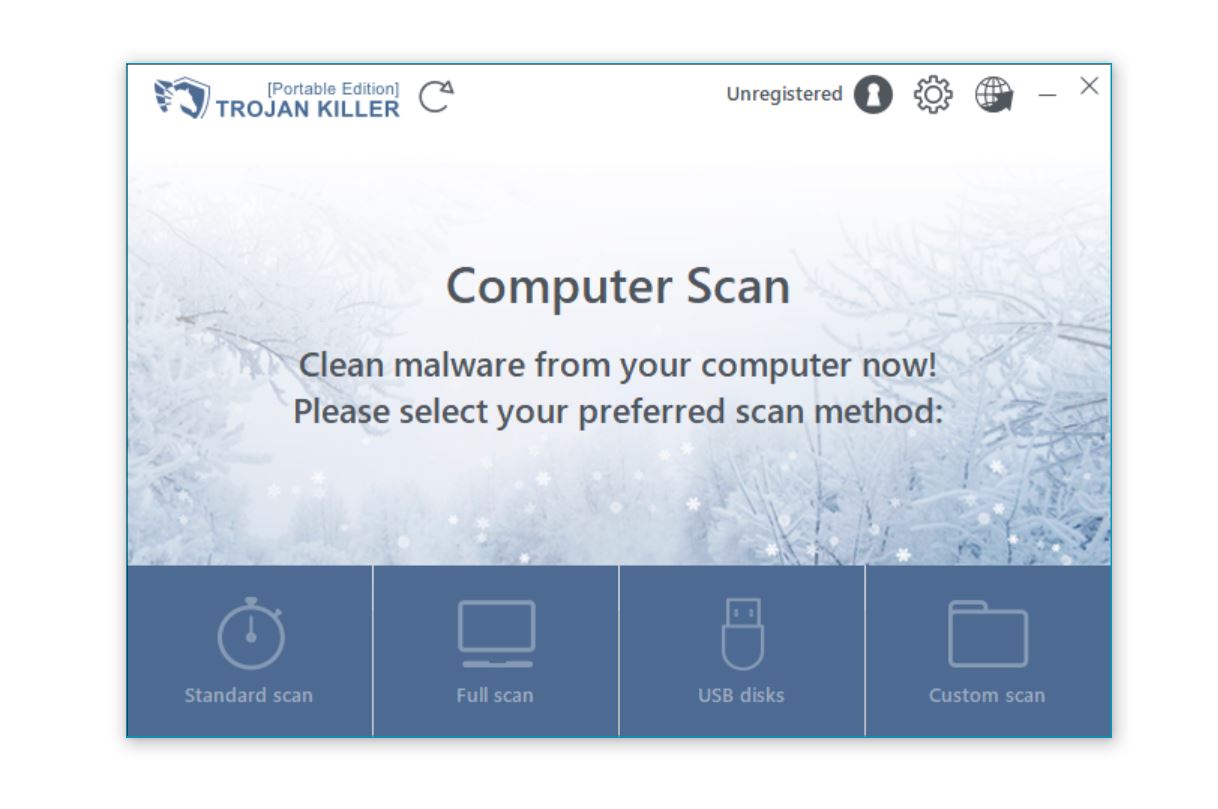Physical Address
Lesya Kurbasa 7B
03194 Kyiv, Kyivska obl, Ukraine
Physical Address
Lesya Kurbasa 7B
03194 Kyiv, Kyivska obl, Ukraine

Altruistic Service (also known as Altruistics, Altrust, Altrustix, Altrisik, Alrustiq) is a dangerous trojan virus that can infiltrate your computer through deceptive means. This comprehensive guide will help you understand what the Altruistic trojan is, how it infects systems, and most importantly, how to remove it completely using the specialized Trojan Killer tool.
| Common Names |
|
| Type | Trojan Virus, Malicious Program |
| First Detected | 2022 |
| Platforms Affected | Windows 7, 8, 8.1, 10, 11 |
| Infection Level | Severe |
| Data Risk | High – Opens doorways for other malware, consumes system resources |
Altruistic Service (commonly referred to as Altruistics) is a malicious trojan virus that disguises itself and bundles with seemingly legitimate software downloaded from unreliable sources. It’s designed to infiltrate your system stealthily and perform various harmful activities without your knowledge or consent.
This dangerous trojan can consume significant system resources, causing noticeable performance degradation. More alarmingly, it acts as a gateway for other malware to enter your system by potentially disabling or bypassing security features like Windows Defender.
Unlike banking trojans such as Zeus or Emotet that focus on stealing financial information, Altruistic primarily operates as resource-consuming malware that creates backdoors for additional infections.
The Altruistic trojan typically infiltrates systems through:
Most commonly, users unknowingly install this trojan when they download and install free software without carefully reviewing the installation options, allowing bundled malware to be installed alongside the desired program.
This distribution method is similar to that used by PUADIManager:Win32/OfferCore, which also relies on deceptive software bundling to infiltrate systems.
Be vigilant for these common symptoms of Altruistic trojan infection:
Altruistic trojan poses serious security risks as it can:
By creating backdoors in your security, Altruistic can pave the way for more damaging threats like Dofoil, which can download and execute additional malicious files on your system.
Trojan Killer is specifically designed to remove complex trojans like Altruistic Service:

If you prefer manual removal, follow these steps carefully:
For more thorough removal, consider these additional steps:
To protect against Altruistic trojan and similar threats, follow these prevention measures:
These preventative measures will also help protect against other threats like browser notification spam and information-stealing trojans that use various deceptive techniques to infect your system.
For security researchers and advanced users, here are some technical details about the Altruistic trojan:
Yes, the Altruistic trojan and its variants are capable of collecting sensitive information from infected systems. While its primary function appears to be system resource consumption and creating backdoors for other malware, many variants have been observed monitoring user activities and potentially transmitting data to remote servers. This could include browsing habits, keystrokes, stored passwords, and other personally identifiable information. The best protection is prompt removal and implementing strong preventive measures.
The multiple naming variations (Altruistics, Altrust, Altrustix, Altrisik, Alrustiq) serve several strategic purposes for the malware creators. First, it helps evade detection by signature-based antivirus solutions that might only recognize specific name patterns. Second, it complicates removal efforts by making it difficult for users to identify all components. Finally, it allows the malware to evolve while maintaining its core functionality. This naming strategy is common among sophisticated malware families that aim to persist on infected systems for extended periods.
Trojan Killer is specifically designed to combat evasive trojans like the Altruistic family. Its advanced detection engines use behavior analysis rather than relying solely on signatures, making it effective at identifying all variants of this trojan regardless of naming differences. The specialized removal algorithms ensure complete elimination of all associated components, including hidden files and registry entries that might be missed by general-purpose antivirus programs. For best results, run a full system scan and follow the recommended removal steps precisely.
Re-infection is possible if the original infection vector remains unaddressed. After successfully removing the Altruistic trojan, it’s crucial to identify how it initially infiltrated your system. If it came bundled with a particular software, avoid that download source in the future. Change all your important passwords after ensuring the system is clean, as credentials might have been compromised during the infection. Finally, implement the prevention measures outlined in this guide, particularly regarding cautious downloading practices and regular system scanning with Trojan Killer to prevent future infections.
In most cases, successfully removing the Altruistic trojan will lead to noticeable performance improvements, as this malware is known to consume significant system resources. However, the extent of performance recovery depends on several factors: how long the infection persisted, whether other malware was installed through the backdoors it created, and your computer’s baseline performance. After removal, it’s advisable to run system maintenance tasks like disk cleanup and defragmentation (for HDDs). If performance issues persist despite successful malware removal, your system might benefit from hardware upgrades or professional servicing.